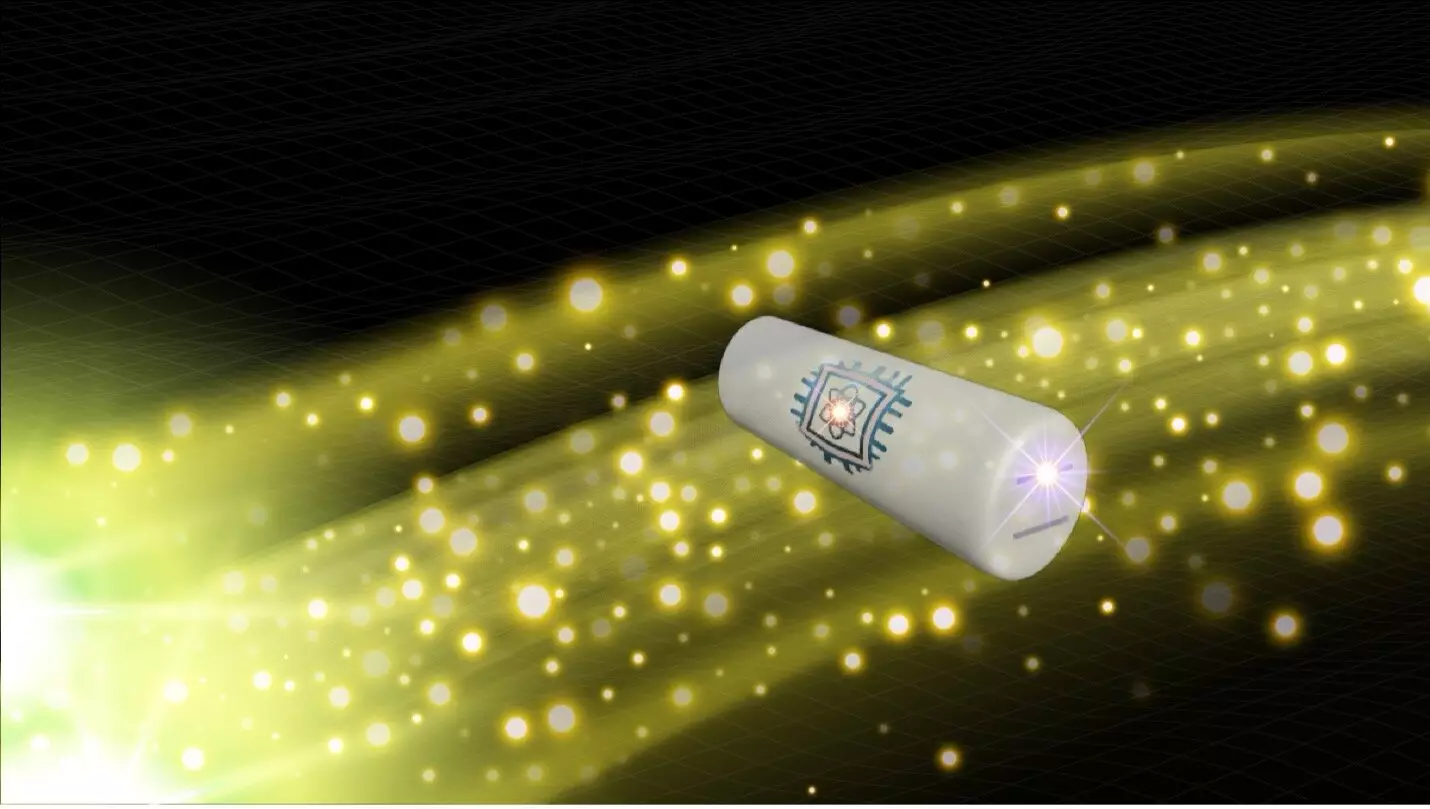In the realm of theoretical physics, few pursuits are as ambitious as the quest to reconcile quantum mechanics with general relativity. While most fundamental forces have been successfully interpreted through the lens of quantum theory, gravity has remained a stubborn anomaly. For decades, scientists have postulated the existence of gravitons—hypothetical particles that would serve as the quantum analog of gravity, analogous to photons for electromagnetism. Recently, a groundbreaking team led by Igor Pikovski from Stevens Institute of Technology has rekindled hope by proposing a method for detecting single gravitons, a feat previously deemed unachievable.
Pikovski’s research team, consisting of bright graduate students and seasoned researchers, has published their findings in *Nature Communications*, presenting a unique solution that leverages existing quantum sensing technologies. The core idea revolves around utilizing an acoustic resonator, a device designed to absorb and emit vibrations. This experimental setup aims to capitalize on improved energy detection techniques to identify the imperceptible effects of single gravitons.
Pikovski draws a parallel between their method and the photoelectric effect, emphasizing that their system operates on discrete energy exchanges. “We are essentially converting gravitational waves into measurable quantum events,” he explains, paving the road toward potential groundbreaking discoveries. The proposed experimental design involves cooling the resonator to its lowest energy state, where it can detect the minuscule energy fluctuations heralding a graviton’s presence.
One of the team’s standout contributions is the introduction of the “gravito-phononic effect,” which describes how the resonator interacts with gravitational waves to produce observable quantum jumps—discrete changes in the system’s energy state. By closely monitoring these jumps, researchers aim to infer the absorption of individual gravitons. The concept is both visionary and practical, demonstrating the intricate relationship between gravity and quantum mechanics in a tangible way.
Moreover, the research team intends to utilize existing data from the LIGO observatories, which have confirmed gravitational waves emanating from cosmic phenomena such as black holes. While LIGO’s instrumentation effectively detects large-scale gravitational waves, Pikovski’s team suggests that it can also provide valuable insights by cross-correlating data to isolate individual gravitons. This collaborative approach enhances the feasibility of the experiment while maximizing the utility of existing scientific resources.
Drawing on pioneering advancements in quantum technology, Pikovski’s initiative embodies the intersection of mathematics, creativity, and engineering. Recent breakthroughs in observing quantum effects in macroscopic systems serve as a catalyst for this endeavor, dispelling the prevailing notion that such experiments were limited to atoms or small particles. Accordingly, the researchers’ proposal carves out a new frontier within the scientific community, positioning them as leaders in the effort to illuminate the fundamentally enigmatic nature of gravity.
The experimental framework relies on the Weber bar—an oft-overlooked cylindrical device capable of absorbing gravitational energy akin to photon interactions. While modern optical techniques dominate the current gravitational detection landscape, the Weber bar’s simplicity and effectiveness make it an attractive option for gravity researchers aiming to capture gravitons.
Despite the groundbreaking potential of Pikovski’s proposed experiment, significant challenges remain. The technology to detect the necessary quantum jumps in materials at the required mass is still underdeveloped. As Tobar notes, “while we’ve seen quantum jumps in some materials, scaling this to larger masses suitable for graviton interaction is the next hurdle.” However, optimism pervades the team’s research, as rapid advancements in quantum technologies may soon render these challenges surmountable.
Looking ahead, Pikovski and his team are motivated by a newfound conviction that the detection of single gravitons is within reach. Their work may well serve as a precursor to a new era in physics, where quantum and gravitational phenomena intertwine to reshape our understanding of the universe.
Ultimately, the successful detection of individual gravitons would not merely represent a remarkable technical achievement; it would also signify a monumental shift in our comprehension of gravity and the fundamental forces governing the cosmos. This could pave the way for groundbreaking theories that unify quantum mechanics and general relativity, providing new insights into the fabric of spacetime itself.
Pikovski’s team stands at the forefront of an exhilarating scientific challenge. Their innovative approach combines theoretical wisdom with practical technology, igniting a hopeful beacon in the long-standing pursuit of understanding gravity at the quantum level. Should they succeed, the implications will echo through the corridors of science for generations to come.


Leave a Reply